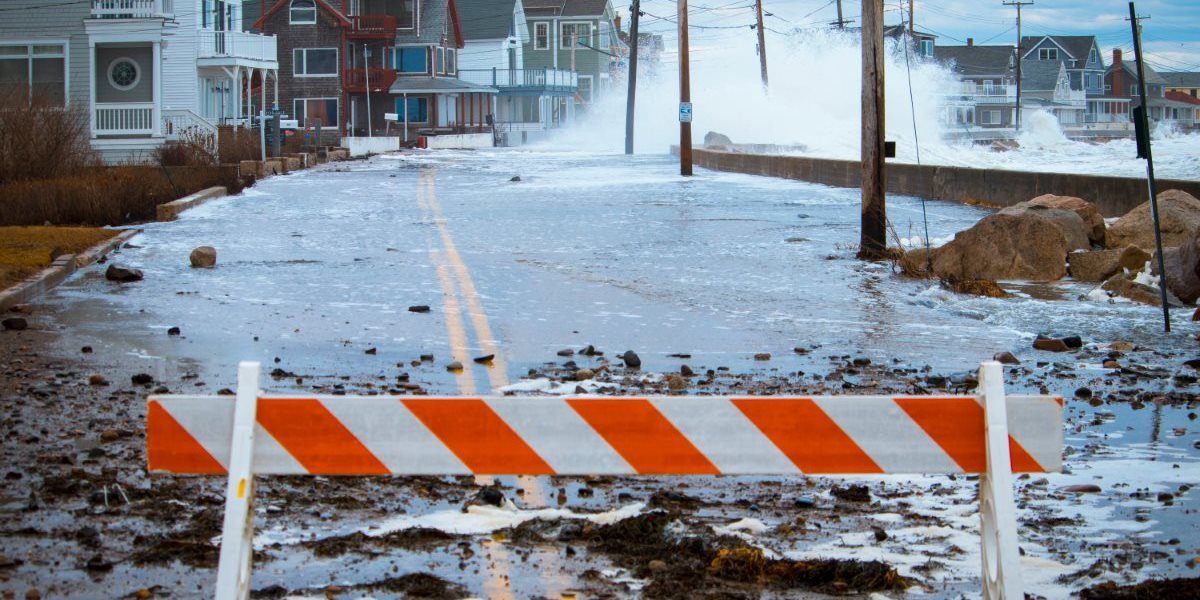XDI’s Top Ten TCFD Physical Risk Tips for Companies
A deeper dive into what to do if you are serious about making good decisions about the climate physical risks of your business.

By Rohan Hamden, CEO
With New Zealand making Task Force on Climate-related Financial Disclosures (TCFD) reporting compulsory and the Canadian government linking mandatory TCFD reporting to corporate COVID relief, it’s the time for businesses to make TCFD a standard part of their risk management regimes. As former Governor of the Bank of England and current United Nations Special Envoy on Climate Action and Finance Mark Carney has said, all companies need to understand and use the TCFD system as climate risks increase.
With five years of experience in working with companies internationally on how to approach reporting and the TCFD, I’ve pulled together XDI’s Top Ten Tips on TCFD Physical Risk Analysis for those just learning about the framework, but also for those already using it to ensure they get the most out of the process. This is a deeper dive into what to do if you are serious about making good decisions about the climate physical risks of your business.
XDI’s Top Ten Tips To Make TCFD Work For You:
1. Know the difference between TCFD analysis versus reporting.
Many companies use TCFD reporting for compliance reasons including, as noted, to qualify for government support or meet specific ESG standards. It is worth going beyond the box-ticking approach and to use the TCFD process to truly understand your climate risk. As extreme weather increases, many companies are already feeling the impacts of events such as fire, flooding and cyclones and it’s good business practise to understand these events and plan accordingly. We have already seen reports of large scale physical risks held by listed companies such as credit risk or insurable losses. Physical risk planning is best done as an ongoing process that feeds into existing risk management, allowing your business to be as resilient as possible.
2. Understand exposure vs vulnerability.
Simple approaches to physical risk assessment usually stop at understanding exposure to risk rather than providing a plan for asset resilience. Exposure analysis is where hazard maps, such as flood maps, are placed over your asset locations, which shows whether you have assets in hazard zones. It’s not enough, however, for you to know if your key assets are sitting in a flood zone. To really understand if your assets are vulnerable or resilient to, say, flooding you need to understand how your asset is constructed with that specific risk in mind. For example: How deep is the extreme flood risk? Are key electrical components located above or below this critical elevation? Is forest fire really a risk to brick and concrete assets, or only those with timber componentry? This is the intelligence you need to make effective business decisions because you can focus on the assets that are genuinely at risk rather than just those that are constructed in risky locations.
3. Assess climate risk based on actual asset data rather than loss tables and averages.
Every built asset has its own unique construction and operating variables that will determine whether it is vulnerable or not to the hazards it may face. The best physical risk assessments will focus on its location, local weather hazards, relevant climate change data and the actual construction of each asset, and test it for resilience by those criteria. Catastrophe models and loss tables might be useful for insurers, but don’t be fooled into using them to understand the real climate risk to your business.
4. Understand your cross dependencies.
The biggest risk to your assets may not be their design or construction. It may be the supply chain infrastructure on which you depend. Is that resilient? How do you know if the road network will continue to allow access to your site, or if the power network is strong enough to keep working through extreme weather events? Cross dependencies can have far more impact on your operations than what happens on site, so understanding the whole risk profile requires analysis of all of the aspects of your business.
5. Assess hazards to the whole portfolio.
A common mistake by many undertaking TCFD reporting is to include only the assets that are directly within their control such as factories, warehouses and office buildings. But what about suppliers, your investment portfolio, held equities, bonds and other associated companies and services you depend on? Do you understand how much risk they carry and whether they will transfer any of that risk to you? A comprehensive understanding of physical risk requires a deep understanding of the transferred risk in your portfolio of investments as well as your assets.
6. Assess risk using multiple time horizons and scenarios.
The current crop of climate models still provide a range of possible futures that we may experience. This level of uncertainty is unlikely to change within our lifetimes, so it’s important to create realistic boundaries around the risks you may face and therefore the range of actions you need to take. The various emissions scenarios, also known as Representative Concentration Pathways (RCP’s), provide a range of possible climate outcomes based on how much carbon we ultimately force into the atmosphere. This is a good place to start. You can compare business as usual (RCP 8.5) with strong mitigation (RCP2.6) to provide the range of possible risks you need to consider. Another important issue is time horizons. The best analysis provides results that are relevant to your decision-making horizon. Is the next decade most important to you, or do you need to think about 20, 30 or even 50 years ahead. Your TCFD physical risk analysis should include timeframes relevant to your business, but also long-term impacts that can change short term valuations. Getting results out to 2100 can give your business a sense of how severe the future may be.
7. Benchmark your position.
When looking at your KPIs like Annual Average Loss and Loss in Productivity consider where you stand with respect to peers. XDI’s TCFD reports compare the physical climate risk for over 2000 global companies around the world. This can help you better understand risk assessment generally as well as the risk to your sector, suppliers and other relevant businesses.
8. Assess risk using real hazards vs trends.
Much analysis of climate change impact is based on the trend data, or averages over time. It is, however, the extreme winds or flood events that will cause the loss in your portfolio of assets. Therefore, your TCFD physical risk reporting should be based on extreme weather analysis that includes the full range of climate model outputs, not just the averages or trend data. It should also cover all of the likely hazards the assets will experience over their operational life. For example, does the analysis cover building subsidence due to extended drought? This is a risk to many assets around the world and is often not included in climate risk reports.
9. Make sure your risk metrics are expressed in direct financial terms.
The results of your TCFD reporting should be in direct financial terms. This way it can feed directly into your financial risk management process. One way to express this is to compare the probability of a damaging event with the cost of that damaging event. In any given year there is a probability of a flood, and should it occur you can expect a certain amount of damage. By combining these two factors you can create a technical insurance premium that can be used to monetise the annual impact.
10. Get help.
If you are just starting out using TCFD reporting or are already using it but feel that you’re not using it to full effect, get help. Climate risk analysis is a new discipline for many companies, and it will take time to skill up your team and bring it into your risk management processes. XDI can help. We carry out detailed climate risk analysis for companies and governments that directly addresses each of the issues raised above. XDI helps our clients to not only understand TCFD reporting but to carry out climate risk analysis for a true picture of what that risk means and how to prepare for it.
For more information or to talk to us about how XDI can help you begin the TCFD process, please get in touch.
Rohan Hamden, CEO, XDI
About XDI
XDI Cross Dependency Initiative provides physical climate risk analysis and reporting for financial service providers, business and government. We have worked with a wide range of financial sector and government clients including the British Columbian government, Legal and General Investment Management and Government of New South Wales. We work with a number of management consultancies in the UK and North America to provide the physical risk component of TCFD reporting. XDI’s analysis uses multi-award winning technology and is proven in the market. XDI creates detailed asset-by-asset failure risk, supply chain and transport risk and cost benefit analysis. We’re looking forward to helping businesses gain a better understanding of climate risk and prepare for what’s ahead in the post-pandemic economy.
